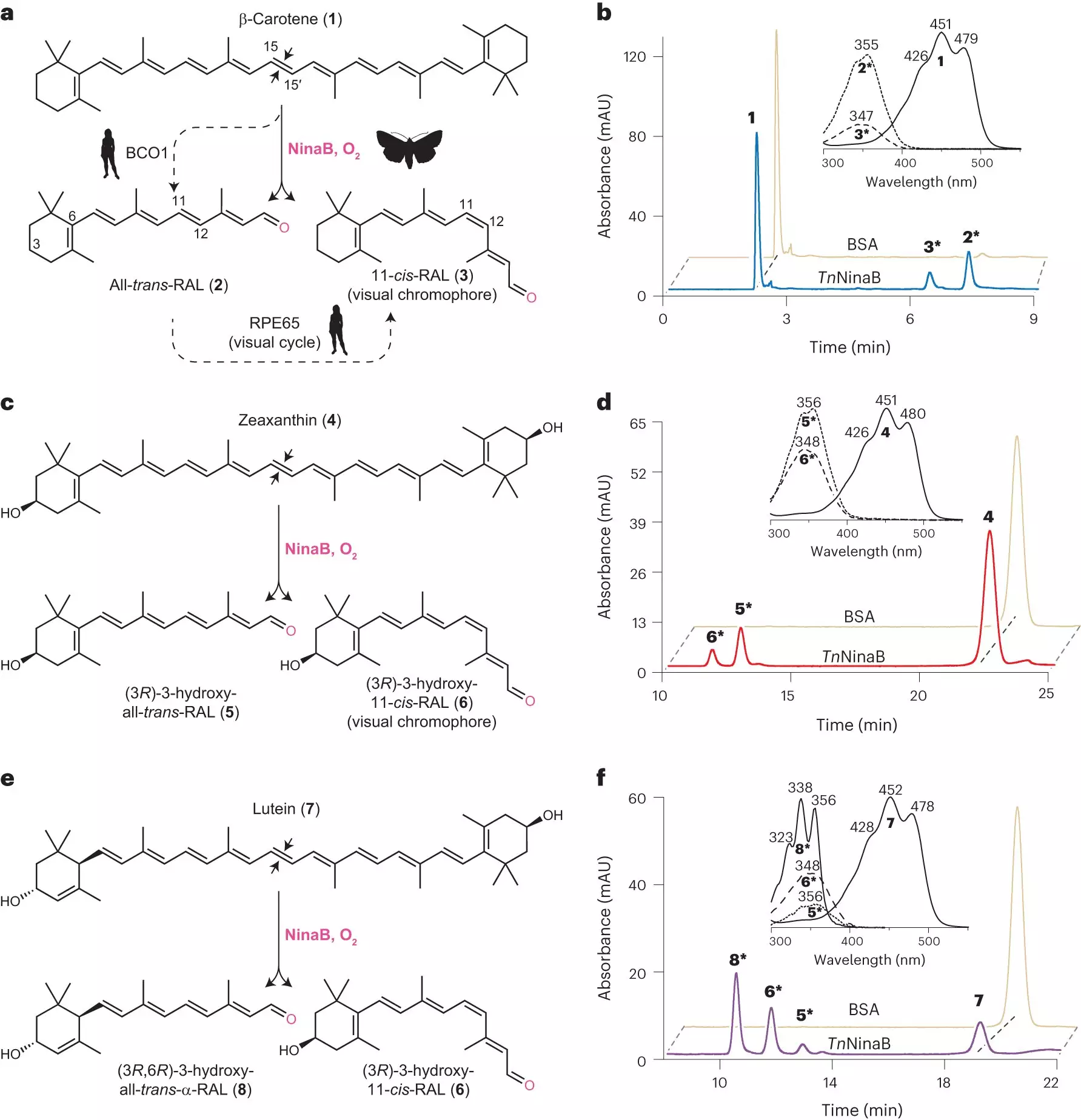Recent research conducted at the University of California, Irvine has shed light on the production of the critical light-absorbing molecule of the retina, 11-cis-retinal, in both humans and insects. The study revealed not only profound similarities but also surprising differences between the two species in how this molecule is synthesized. This new understanding is crucial in the context of retinal diseases, particularly Leber congenital amaurosis, which is a devastating childhood blinding disease.
Evolutionary Origin and Functional Relationships
The study used X-ray crystallography to analyze NinaB, a protein found in insects, which plays a role similar to the RPE65 protein in humans. Both proteins are essential for the synthesis of 11-cis-retinal, and mutations in either can lead to severe visual impairment. Despite sharing a common evolutionary origin and having similar three-dimensional structures, the researchers discovered that the process of producing 11-cis-retinal differs between humans and insects.
In both humans and insects, the creation of 11-cis-retinal begins with the consumption of foods like carrots or pumpkins, which contain compounds used for vitamin A generation. Carotenoid cleavage enzymes, including NinaB and RPE65, play a crucial role in metabolizing these nutrients. While humans require both enzymes to convert beta-carotene into 11-cis-retinal, insects can achieve the same conversion using just NinaB. This disparity in enzyme requirement was a key focus of the study.
Read More: The Digital Services Act: EU cracks down on illegal and problematic content
Lead author Yasmeen Solano highlighted the structural similarities between NinaB and RPE65, noting that the enzymes share a common evolutionary origin and have similar three-dimensional structures. However, the study revealed that the locations where these enzymes carry out their activities differ significantly. By studying NinaB, the researchers gained valuable insights into the catalytic machinery necessary for the function of retinal visual pigments, as well as a better understanding of RPE65 mutations.
Implications for Future Research
The discoveries made by the research team at the University of California, Irvine have opened up new avenues for further exploration into the production of retinal molecules in humans and insects. By unraveling the complexities of 11-cis-retinal synthesis and shedding light on the functional relationships between NinaB and RPE65, this study paves the way for future research aimed at addressing retinal diseases caused by mutations in these critical enzymes.


Leave a Reply